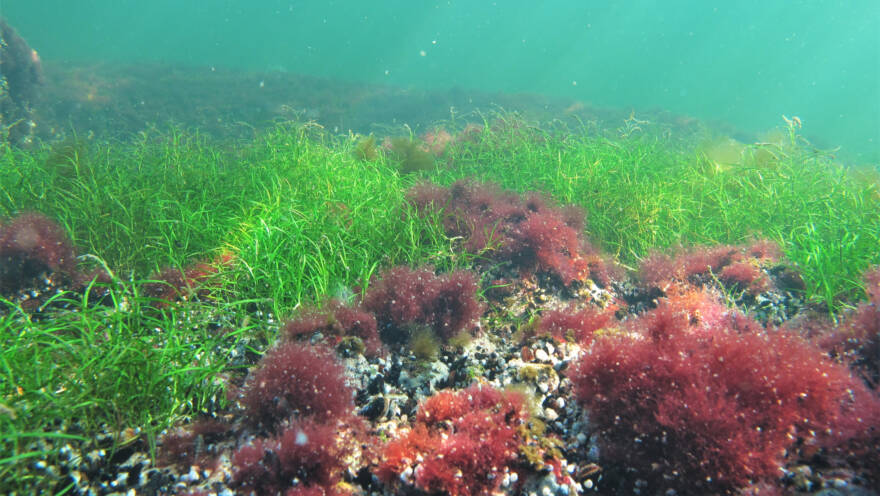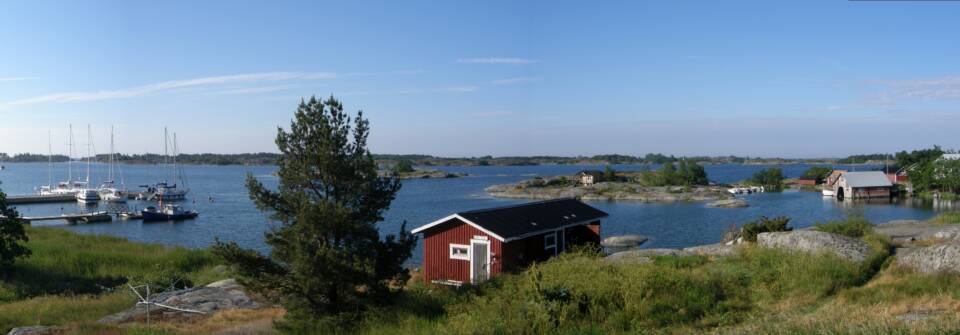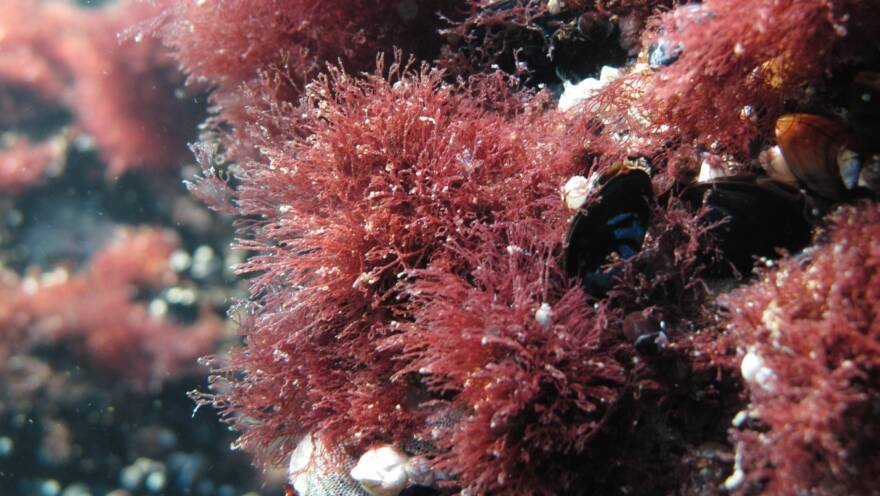
Getting to Know the Most Valuable Underwater Marine Nature Areas of the Finnish Coast
We are dependent on the state and functionality of the marine ecosystem in many ways. The biodiversity of marine areas can only be maintained and protected if the sea and its intricacies are well understood.

The services provided by the seas are often taken for granted
A healthy and diverse marine ecosystem provides people with healthy food and recreational opportunities, as well as many other ecosystem services. It can absorb nutrients and harmful substances and also slow down climate change. We are therefore dependent on the state and functionality of the marine ecosystem in many ways.
However, the sea and its natural resources are being increasingly exploited. At the same time, biodiversity is declining, and the state and functionality of the marine ecosystem are being threatened. This leads to a decrease in the production of ecosystem services and, at worst, significant economic losses.
There are many ways to protect our seas
The marine ecosystem can be protected not only by reducing pollution and nutrient emissions but also by restricting the use of areas. Protected areas can safeguard the most valuable species and habitats and prevent the decline of marine biodiversity.
Marine spatial planning is another effective way to guide human activities at sea so that their impacts do not exceed the carrying capacity of nature. The marine spatial plan is a strategic vision for the sustainable use of the marine area and the support of a good marine environment status, formed together with stakeholders. National Maritime Spatial Plan for Finland 2030 was approved in 2020 in accordance with the EU’s Directive for establishing a framework for maritime spatial planning.
Read more:
Directive establishing a framework for maritime spatial planning(siirryt toiseen palveluun)
Maritime spatial plan for Finland 2030(siirryt toiseen palveluun)
Ålands maritime spatial planning (in Swedish)(siirryt toiseen palveluun)
Knowledge about marine nature and its valuable areas is an essential part of sustainable use of the sea
In planning, it is essential to identify the ecologically and biologically significant marine nature areas. Previously, there was no easily accessible or compiled information on the most ecologically and biologically valuable areas of Finland’s underwater marine nature.
As a result of fifteen years of surveys by the Underwater Marine Biodiversity Inventory Program (VELMU), the first marine nature value map was finally produced in 2018. The value map was based on approximately 140,000 VELMU observations and took into account both species and habitat types and the pressures affecting them. The map was produced using the same Zonation software that has been used, for example, to identify valuable forest areas in the Metso program.
The research concluded that up to three-quarters of the most diverse and functionally important areas of underwater marine nature are located outside the current marine protection network.
Read more:
Finnish Marine Protected Area Network(siirryt toiseen palveluun)
Zonation software(siirryt toiseen palveluun)
Marine nature value areas are being identified worldwide
The UN Convention on Biological Diversity (CBD) also aims to preserve a functioning and diverse marine ecosystem. To locate the most valuable marine areas, “Ecologically or Biologically Significant Marine Areas” (EBSAs) have begun to be described in the world’s seas. In 2019, nine EBSAs were identified in the Baltic Sea, four of which are in Finnish areas. These include the northern Bothnian Bay, the Kvarken Archipelago, the Archipelago Sea and Åland (together with Sweden), and the eastern Gulf of Finland (together with Russia).
Read more:
UN Convention on Biological Diversity (CBD)(siirryt toiseen palveluun)
Ecologically or Biologically Significant Marine Areas (EBSA)(siirryt toiseen palveluun)
Too general and “too” detailed? Is there a balance?
However, after the process, it was concluded that while identifying EBSA areas is an important step in safeguarding the global marine ecosystem, such large areas are not useful for national decision-making. Thus, there was a situation where marine spatial planning had access to a very detailed Zonation map and a very general EBSA map. Neither was ideally suited as a basis for national marine spatial planning. The bodies coordinating marine spatial planning were eagerly awaiting a map that integrated all marine nature information and simply but reliably indicated the location of the most valuable marine areas across Finland’s marine territory.
Therefore, EMMA – the best of both worlds
-
 Find out more
Find out moreEMMA report (in Finnish) (siirryt toiseen palveluun)
For this reason, it was decided to combine the best aspects of both approaches: the ability of the Zonation map to compile a vast amount of survey data was combined with the internationally accepted CBD criteria used in the EBSA process. These criteria include, among others, the biological diversity, uniqueness, rarity, sensitivity, and naturalness of the marine area, as well as its importance for endangered species or the life cycle of a species. This way, Finland’s “Ecologically Significant Underwater Marine Areas,” or so-called EMMAs, were delineated. This allowed the most valuable marine nature areas to be described as uniformly and transparently as possible on a single clear map.
The identification of the areas utilized the vast data collected by VELMU and the modeling based on it, as well as the knowledge of local experts and literature. Researchers and planners, as well as numerous representatives from local stakeholders, participated in the EMMA workshops.
The final product was a simple map
The final product was a simple and easily readable geospatial dataset that delineated Finland’s 87 most valuable underwater marine nature areas, or EMMAs. In addition to the geospatial dataset, a report was written describing each individual EMMA with numerous map images. This way, underwater natural values can be considered in decision-making, and the EMMA areas have already been actively used as background material for the national marine spatial plan.

What next?
However, the usefulness of EMMA is not limited to marine spatial planning. Information about EMMA areas can also be utilized in other planning, such as developing the network of protected areas or licensing projects located on the coast, as well as aiding the placement of offshore wind farms and fish farms.
Thanks to the work of VELMU, knowledge about underwater marine nature is constantly growing. Therefore, EMMAs can also be updated. In the future, more EMMA areas may be identified, possibly on an even more local scale, painting an even better picture of the underwater marine nature along our coast.
Back to points of view


